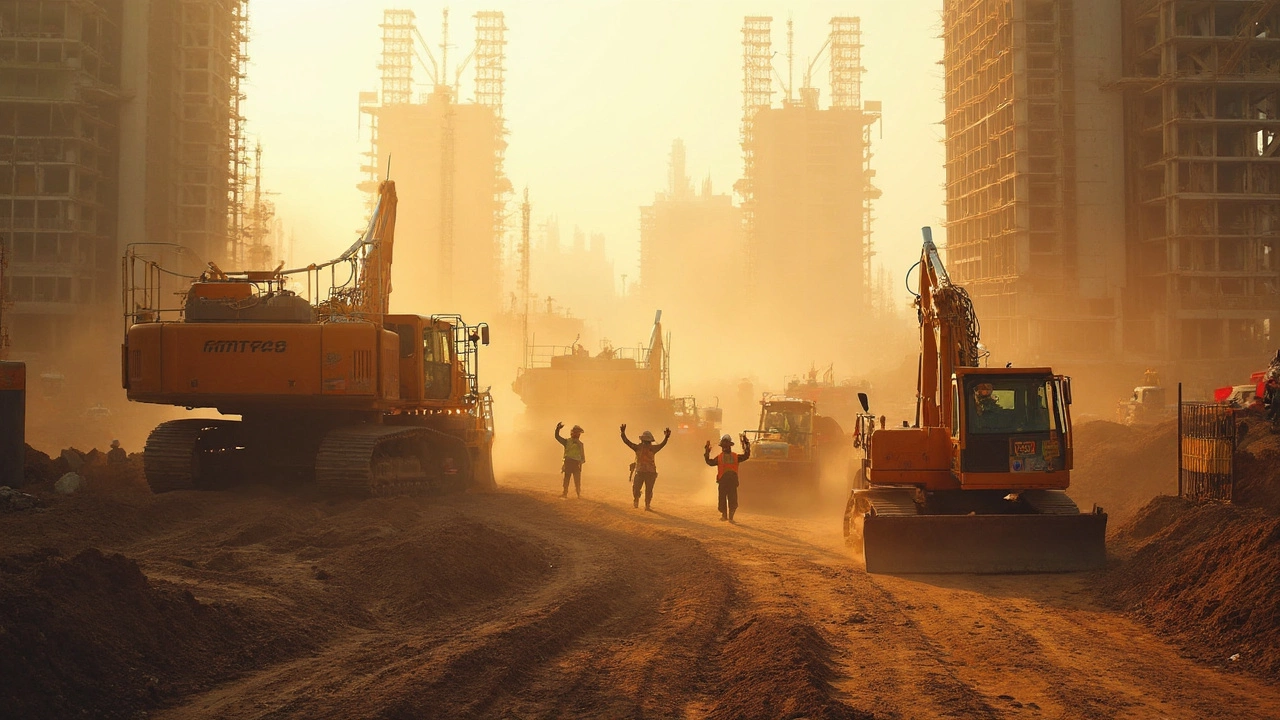- Understanding Micro Small Scale Industry: Key Insights for Aspiring Entrepreneurs Jan 7, 2025
- Richest Pharmacist in the World 2025 - Who Holds the Fortune? Oct 10, 2025
- Which Country Has the Highest Demand for Indian Clothes? Dec 1, 2025
- Top Pharma Plants in India: Leading Manufacturers in 2025 Oct 17, 2025
- Furniture Import Costs from India: What You Really Pay Jun 18, 2025
Earth Moving Equipment: What You Need to Know
When you hear "earth moving equipment" you probably picture massive bulldozers ripping through a site. In reality, the family includes excavators, loaders, backhoes, and compact track machines. Each piece does a specific job, but they all share one goal: move soil, rock, or debris quickly and safely.
Knowing the right machine for the job saves time, money, and headaches. A mini‑excavator can handle tight city jobs, while a crawler dozer tackles large open‑pit projects. Picking the wrong size means fuel waste, slower progress, and higher wear‑and‑tear.
Key Types of Earth Movers
Bulldozers push material with a heavy blade and often have a ripper at the back for breaking up hard ground. Excavators use a swing arm and bucket to dig deep trenches or lift heavy loads. Wheel loaders scoop and dump loose material, perfect for loading trucks. Backhoe loaders combine a front loader with a rear digging arm, offering versatility on smaller sites. Finally, compact track loaders give you the maneuverability of a small machine with the traction of tracks, ideal for uneven terrain.
Maintenance tips apply across the board: keep filters clean, check hydraulic fluid daily, and inspect tracks or tires for wear. Simple habits prevent costly breakdowns and keep the equipment running at peak efficiency.
India’s Role in Manufacturing Heavy Equipment
India is stepping up as a major player in earth moving equipment production. Companies are building larger, more powerful machines domestically, reducing the need for imports. The post "India's Biggest Machine" highlights how local engineering now produces some of the largest heavy machinery in the country, showing a clear shift toward self‑reliance.
Government initiatives like the Production‑Linked Incentive (PLI) scheme are boosting R&D and encouraging manufacturers to adopt advanced technologies such as telematics and automated controls. This means newer Indian‑made earth movers are not only robust but also smarter, offering real‑time performance data to operators.
For buyers, the rise of Indian manufacturers translates into competitive pricing and easier service support. When you buy a locally produced excavator, you’ll find parts and technicians nearby, cutting downtime and transport costs.
Looking ahead, the industry is eyeing electric‑powered earth movers to cut emissions on construction sites. Several Indian firms are already testing battery‑driven loaders, which could become mainstream as charging infrastructure expands.
If you’re planning a project, start by listing the tasks you need to complete, then match them to the appropriate machine type. Consider the terrain, material hardness, and site size. Finally, weigh the benefits of locally manufactured equipment—lower price, faster service, and support for the growing Indian manufacturing ecosystem.
Asia's Largest Earth Moving Equipment Manufacturer: The Big Player in India
- Aarav Sekhar
- May 7, 2025
Curious about who dominates the earth moving equipment market in Asia? This article lays out exactly which company sits on top, why they're so big, and what makes them stand out in India. Find out how their reach drives construction projects and what sets their machines apart. Expect real facts and practical insights for anyone interested in heavy machinery or construction growth. Learn some tips about choosing equipment and keeping up with new trends in the industry.
